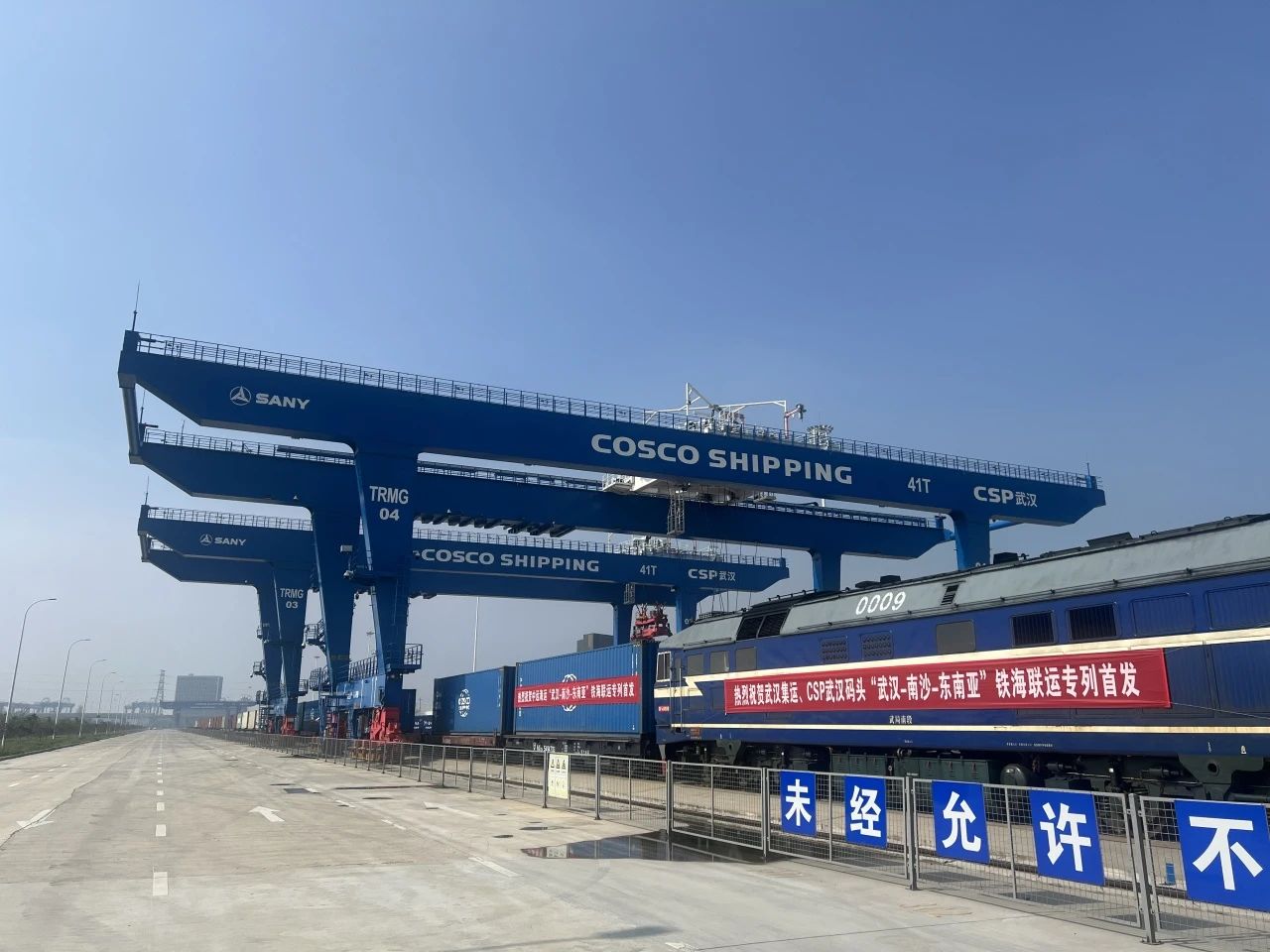“Hubei - Guangzhou Port” Sea-Rail Intermodal Transport Added A New Line, With a Growth of over 70% in Its Business Volume in the First Quarter (Figure)

This train departed from Wuhan Xianglushan Station and arrived at Guangzhou Nansha Port in just 2 days. It is a new logistics channel added to the “Hubei - Guangzhou Port” direction, following Jingmen and Yichang. It provides customers with more efficient, convenient, and safe logistics services, promotes the deep participation of Hubei and Guangdong in the construction of a unified national market, and helps the economic and trade cooperation between the Yangtze River Economic Belt and the Guangdong-Hong Kong-Macao Greater Bay Area to a new level.
The opening of the “Wuhan - Guangzhou Nansha Port” sea-rail intermodal transport train is a significant result achieved through the cooperation between Guangzhou Port Group and Wuhan COSCO Shipping with the strong support of Wuhan Railway Bureau. The special train carried a total of 70TEU of metal products, and adopted “point-to-point” container transportation throughout the process, without the need of secondary unpacking for inspection, which not only saves valuable time but also reduces logistics costs, ensuring the quality of transported products.
The Yangtze River Economic Belt, as an important region for China’s economic development, has abundant resources and industrial advantages. The Guangdong-Hong Kong-Macao Greater Bay Area, as an important window for China’s opening-up, has a vast market and advanced industrial system. The “Wuhan - Guangzhou Nansha Port” sea-rail intermodal transport channel has broken the time limitations of traditional river transportation, greatly improved transportation efficiency, brought more business opportunities and development space for enterprises in both regions, and injected new vitality into logistics transportation in Wuhan and even the entire Yangtze River Economic Belt.
In recent years, Guangzhou Port Group has accelerated the construction of the world-class port with Nansha Port Area as the core, and achieved significant results in the field of sea-rail intermodal transport. Relying on convenient railway-port connection conditions, Guangzhou Port has built a diversified network layout of “international liner routes” + “shuttle bus branch lines”, and “inland port offices”. It has closely cooperated with ship owners, ports, shippers, and railways to jointly build a public platform for sea-rail intermodal transport, providing efficient and convenient multimodal logistics channels for inland enterprises.
It is reported that in the first quarter of this year, the sea-rail intermodal transport of Guangzhou Port showed a continuous growth trend, with a year-on-year increase of over 70% in business volume. (Cai Jibo, Li Jian)
News
- Guangzhou Port Co., Ltd. and GAC International Signed a Strategic Cooperation Agreement to Jointly Build the South China Automotive Logistics Channel
- Guangzhou Port Group Travelled to Europe for Exchanges and Presentation (Picture)
- New Record Made by Huangpu Stevedoring Branch Company in Handling Steel (Picture)
- Two General-purpose Gantry Cranes landed on Beijiang, Shaoguan (Picture)
- Guangzhou Port Received the First Batch of Soybeans Imported by China from South Africa (Picture)